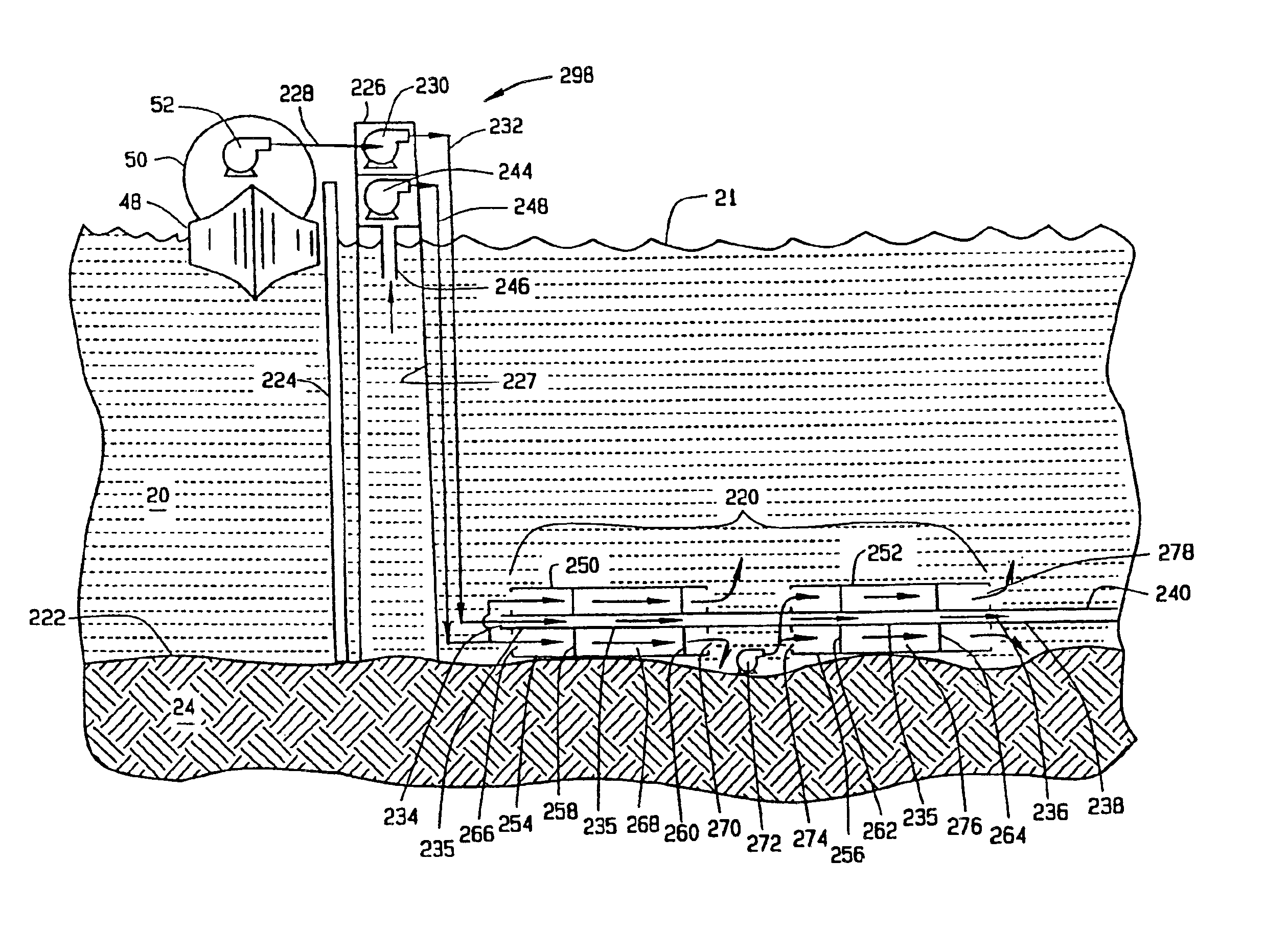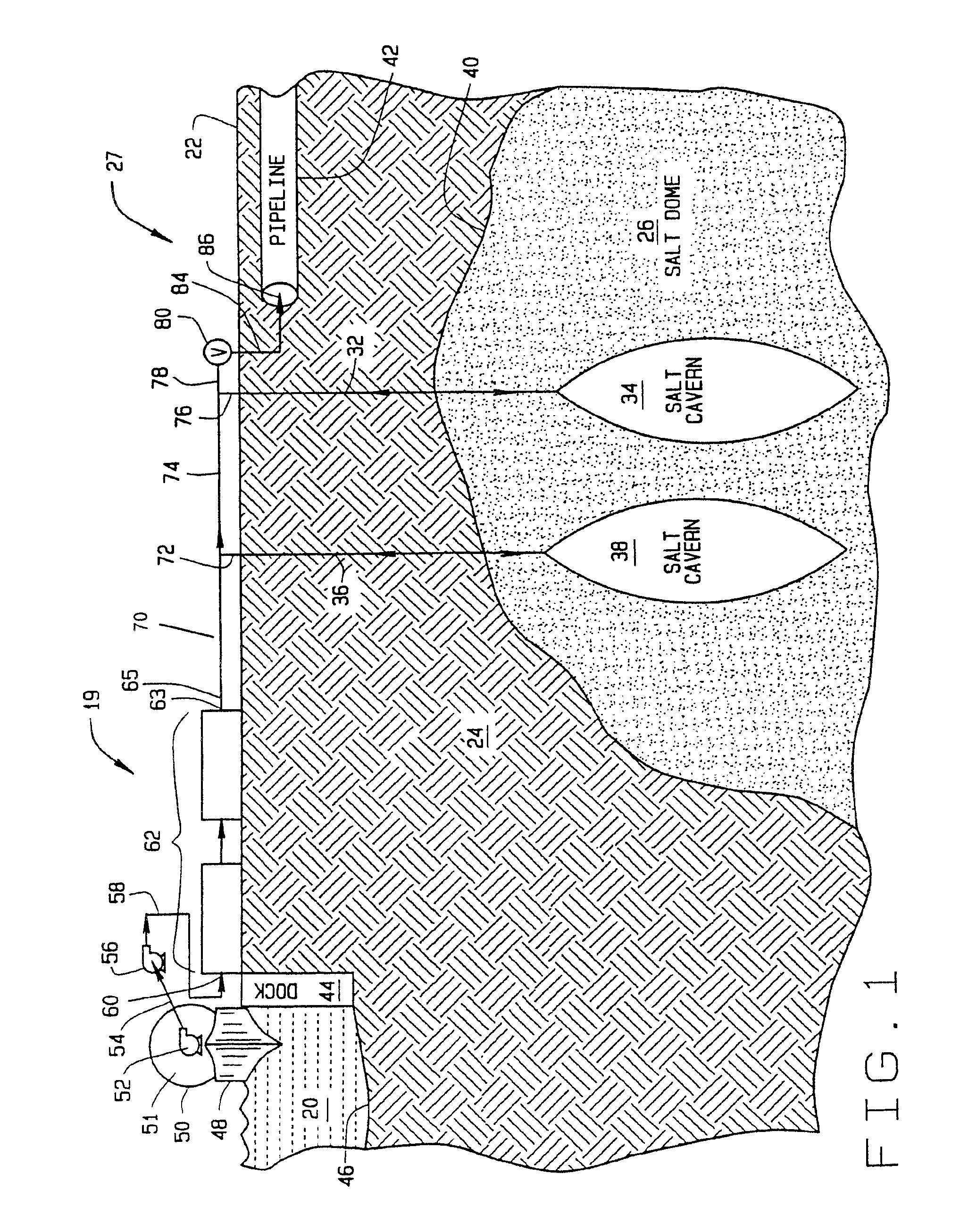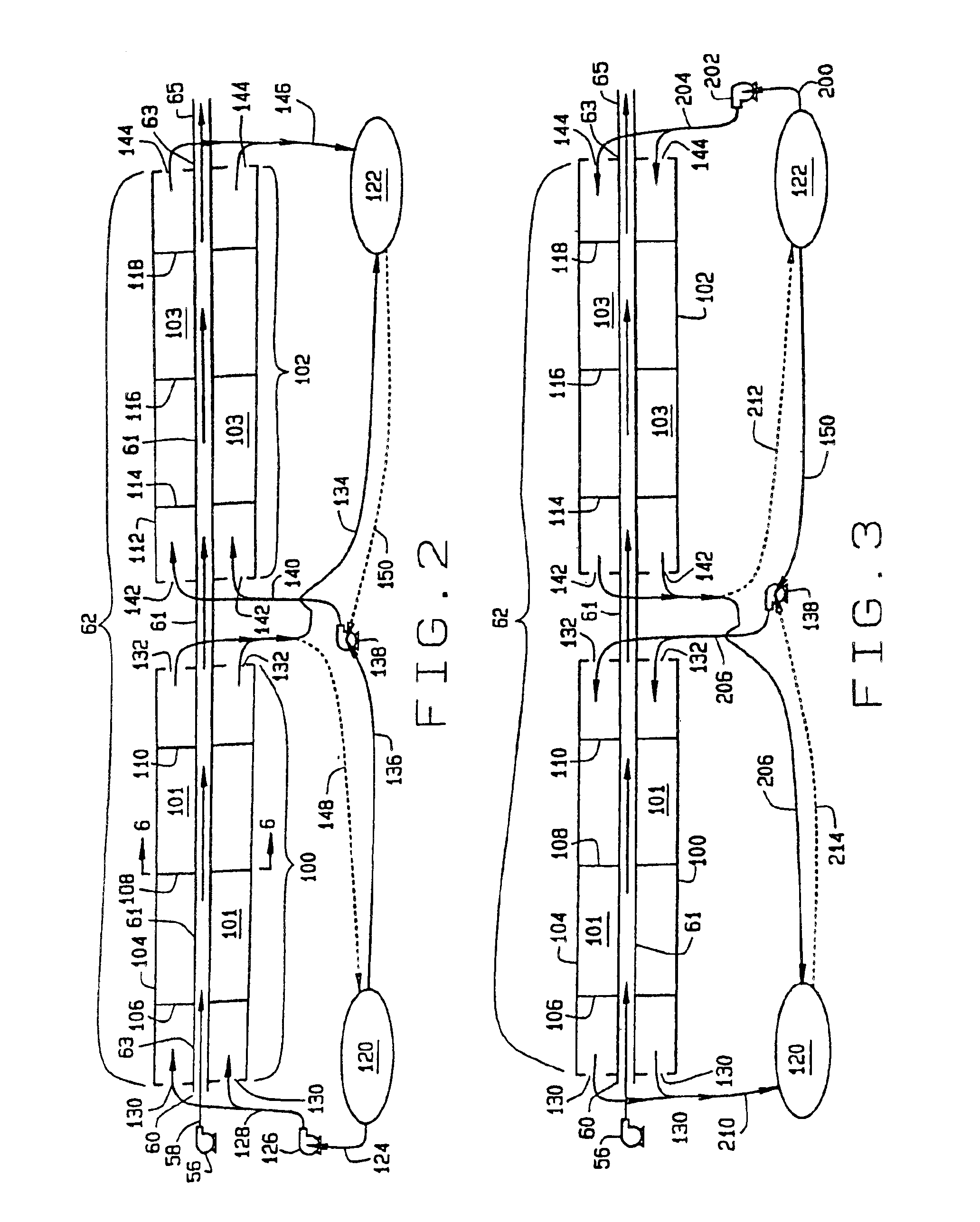Method and apparatus for warming and storage of cold fluids
a technology for cold fluids and heating and storage, which is applied in the direction of liquid handling, container discharging methods, packaged goods types, etc., can solve the problems of stranded gas that is produced concurrently with crude oil, may take 12 hours or more to pump lng, and may cost more than $100,000,000 to build lng transport ships, so as to encourage creep and reduce the volume of salt caverns
- Summary
- Abstract
- Description
- Claims
- Application Information
AI Technical Summary
Benefits of technology
Problems solved by technology
Method used
Image
Examples
example # 1
EXAMPLE #1
This hypothetical example is merely designed to give broad operational parameters for the Bishop One-Step Process conducted at or near dockside as shown in FIG. 1. A number of factors must be considered when designing the facility 19 including the type of cold fluid and warmant that will be used. Conventional instrumentation for process measurement, control and safety are included in the facility as needed including but not limited to: temperature and pressure sensors, flow measurement sensors, overpressure reliefs, regulators and valves. Various input parameters must also be considered including, pipe geometry and length, flow rates, temperatures and specific heat for both the cold fluid and the warmant. Various output parameters must also be considered including the type, size, temperature and pressure of the uncompensated salt cavern. For delivery directly to a pipeline, other output parameters must also be considered such as pipe geometry, pressure, length, flow rate a...
example # 2
EXAMPLE #2
This hypothetical example is merely designed to give broad operational parameters for the Bishop One-Step Process conducted offshore as shown in FIGS. 4 and 5. A number of factors must be considered when designing the facilities 298 and 299 including the type of cold fluid and the temperature of the warmant that will be used. Conventional instrumentation for process measurement, control and safety are included in the facility as needed including but not limited to: temperature and pressure sensors, flow measurement sensors, overpressure reliefs, regulators and valves. Various input parameters must also be considered including, pipe geometry and length, flow rates, temperatures and specific heat for both the cold fluid and the warmant. Various output parameters must also be considered including the type, size, temperature and pressure of the uncompensated salt cavern. For delivery directly to a pipeline, other output parameters must also be considered such as pipe geometry,...
example # 3
EXAMPLE #3
This hypothetical example is merely designed to give broad operational parameters for an alternative embodiment including a vaporizer system for warming of cold fluids with subsequent storage in uncompensated salt caverns and / or transportation through a pipeline, as shown in FIG. 10. Unlike conventional LNG facilities, no cryogenic tanks are used in the on-shore facility 310 of FIG. 10. (The ship 48, as previously mentioned, does contain cryogenic tanks 50.) A conventionally designed vaporizer system 260 is used in this alternative embodiment instead of the coaxial heat exchangers 62 and 220, discussed in the previous examples. (Conventional vaporizer systems typically operate in the range of 1,000-1,200 psig.) The conventionally designed vaporizer system 260 will need to be modified to accept the higher pressures associated with uncompensated salt caverns (typically in the range of 1,500-2,500 psig). A number of factors must be considered when designing the facility 310 i...
PUM
 Login to View More
Login to View More Abstract
Description
Claims
Application Information
 Login to View More
Login to View More - R&D
- Intellectual Property
- Life Sciences
- Materials
- Tech Scout
- Unparalleled Data Quality
- Higher Quality Content
- 60% Fewer Hallucinations
Browse by: Latest US Patents, China's latest patents, Technical Efficacy Thesaurus, Application Domain, Technology Topic, Popular Technical Reports.
© 2025 PatSnap. All rights reserved.Legal|Privacy policy|Modern Slavery Act Transparency Statement|Sitemap|About US| Contact US: help@patsnap.com



